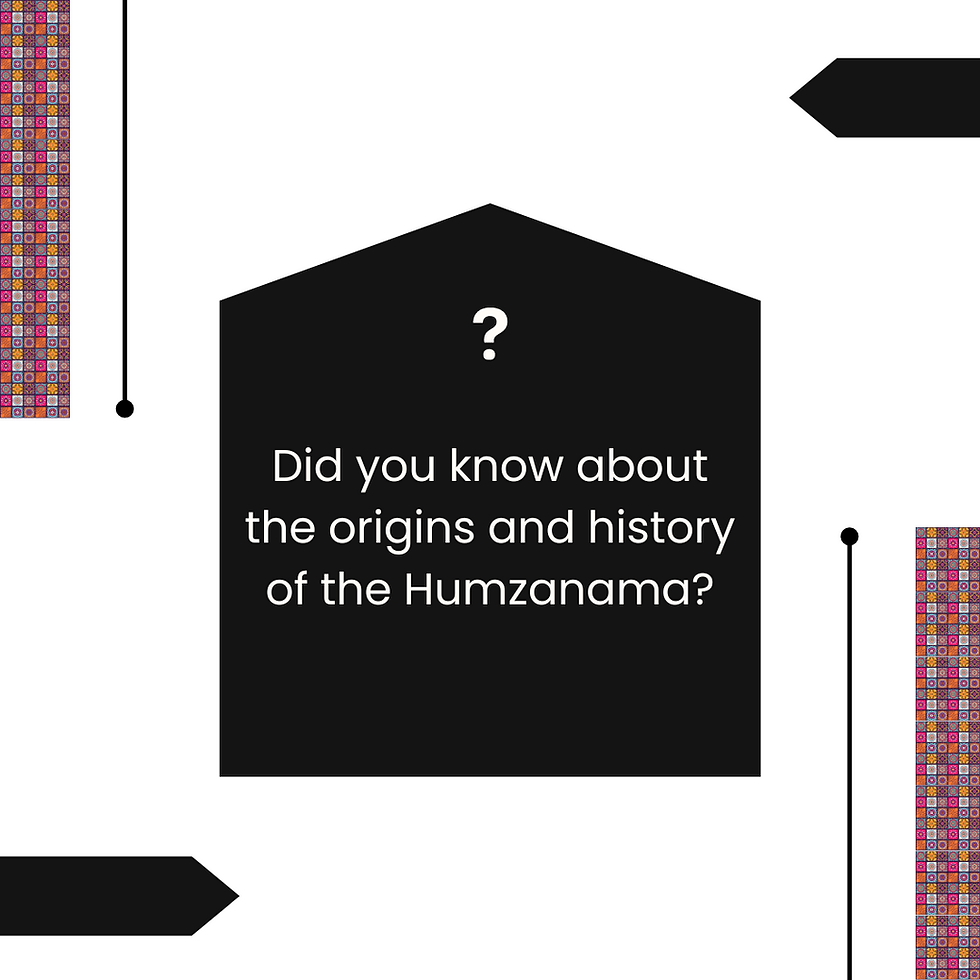
Daastan-e-Ameer Humza (also known as Humzanama or Tilism-e-Hoshruba) is a traditional Persian story originally written in the 13th century. It is a part of the larger story cycle of Ameer Humza, a legendary hero from Persian, Arabic, and Urdu literature. The protagonist, Ameer Humza, is believed to have been inspired by the character of the Prophet Muhammad (P.B.U.H)'s uncle, Humza (R). The epic is likely to have been inspired by the tradition of Daastangoi, storytelling cycles in Arabic, including 1001 nights, and legends in ancient Persian mythology.
The epic:
The story is set in the magical world of Hoshruba, ruled by the Sorcerer Afrasiyab, and the human realm, ruled by King Nausherwan. The story's main protagonist is Ameer Hamza, a prince and warrior known for his bravery, wisdom, and magical powers. He is aided in his quest by his nephew Amr bin Hares, a skilled warrior and magician.
The world of Tilsim-e-Hoshruba is a cornucopia of fantasy creatures, like dragons, demons, and giants, full of action-packed battles and magical adventures. The narrative is structured as a series of talismans, or magical worlds, that Ameer Hamza and his companions must navigate through in order to defeat Afrasiyab and his army of sorcerers.
The original text
The original text of Daastan-e-Ameer Hamza was written at the court of the Samanid dynasty in the 10th century CE. The author of the original text, Abu'l-Qasim Hasan Dehlavi, was a poet and scholar who lived in the 10th century CE at court and is said to have been known for his wit and humour.
Mughal-era retelling:
The most famous Persian manuscript of Daastan-e-Ameer Hamza is the one known as the "Hamzanama," a lavishly illustrated manuscript that dates back to the late 16th century and is now housed in the British Library in London, UK. It was commissioned by the Mughal emperor Akbar in the late 16th century and was created by a team of artists and calligraphers over a period of several years. It was intended as a tribute to the Persian heritage of the Mughal dynasty and as a celebration of the literary and artistic achievements of the Persian-speaking world.
The copy comprises over 1,400 pages, including 250 highly detailed and colourful illustrations depicting the magical events described in the text in what may be one of the finest examples of Persian miniature painting. It remains an important cultural artefact and a testament to the enduring popularity and influence of the epic. This copy of the Hamzanama was believed to be lost for centuries before being rediscovered in the mid-20th century by a British art historian named Stuart Cary Welch.
Translations and adaptations into Urdu:
Muhammad Hussain Jah, a 19th-century Urdu writer, wrote the most famous version of the epic in Urdu. He also wrote under the pen name "Miran." It was published in the 1860s and is considered the most comprehensive and influential version of the story in Urdu literature. It is often referred to as the "Jah Nama" or the "Tilism-e-Hoshruba," it consists of 46 volumes with more than 21,000 pages.
Other notable Urdu versions of the story include those written by Maulana Altaf Hussain Hali, Ahmad Husain Qamar, and Abdullah Bilgrami. These versions were written in the late 19th and early 20th centuries and helped to popularize the story among the masses. However, Jah's version remains the most widely read and celebrated adaptation of Daastan-e-Ameer Hamza in Urdu literature.
Impact and Significance in the modern world
Daastan-e-Ameer Hamza has significantly impacted Urdu literature and influenced many other works of fiction in the Urdu language. It has also been adapted into numerous stage plays, television dramas, and films, making it a beloved part of the South Asian cultural heritage.
It continues to be celebrated and revered at home, a cultural touchstone of sorts. It is still used to transmit moral and ethical values to young children. Seldom does one meet a child who has not been gifted one of the books from Tilsim-e-Hoshruba by their elders, making it a part of what we know as "Tarbiat" - the traditional education one receives at home.
This blog has been written by Miss Komal.
Comments